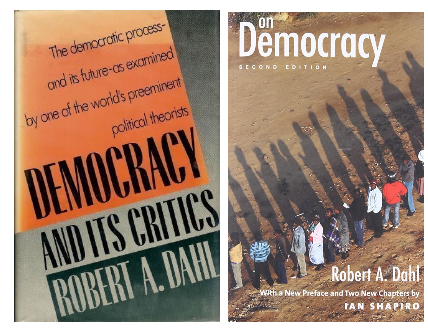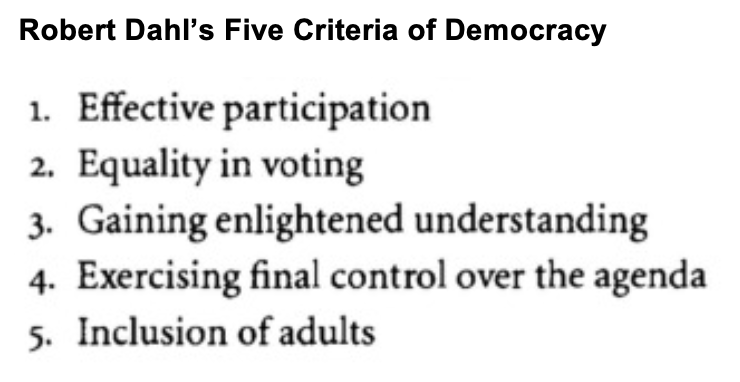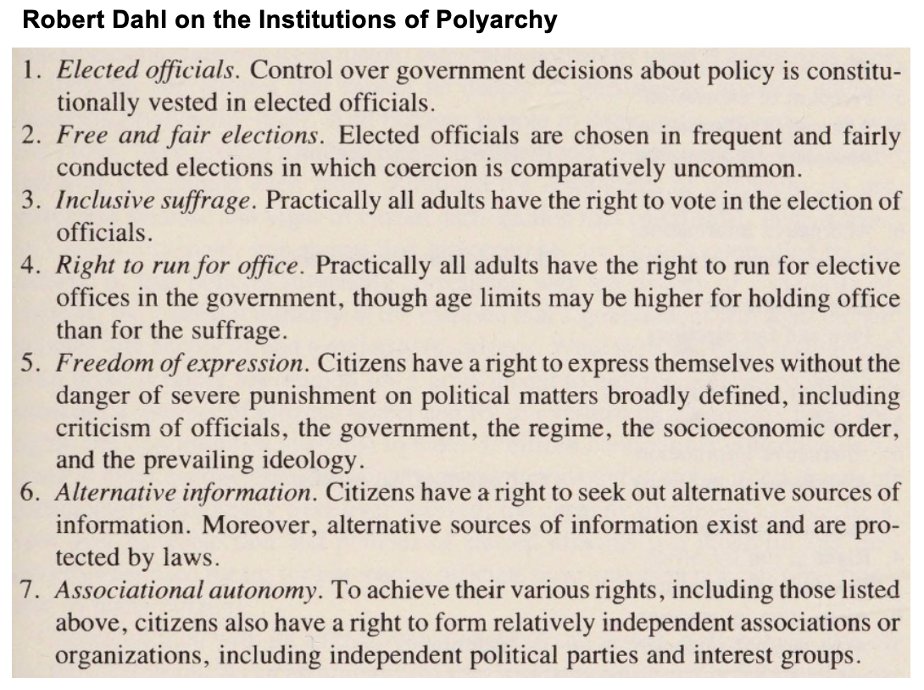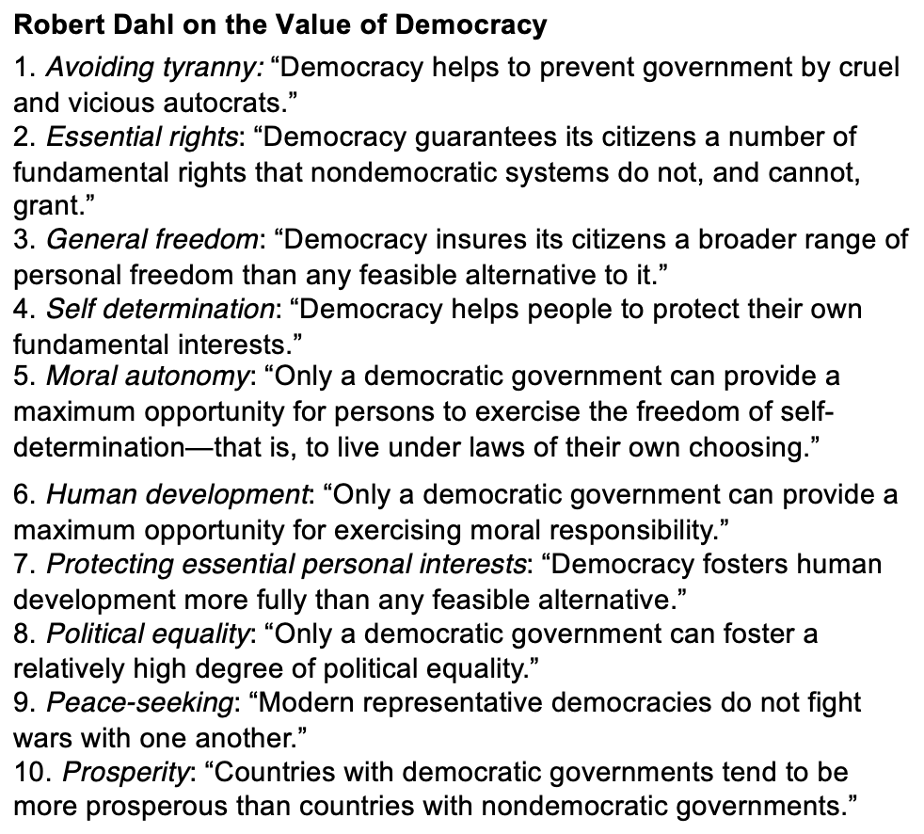𝗥𝗼𝗯𝗲𝗿𝘁 𝗗𝗮𝗵𝗹 spent most of his career thinking about 𝗱𝗲𝗺𝗼𝗰𝗿𝗮𝗰𝘆. He distinguished between the ideal (democracy) and the real (polyarchy). He also had a lot to say about the value of democracy. 🧵 

1/5 Ideal Democracy I. Dahl starts by arguing that the distinctive ideal of democracy is the strong principle of intrinsic equality, that all adults are the best judges of their interests.
Then he elaborated five “criteria” for a democratic process: 👇
Then he elaborated five “criteria” for a democratic process: 👇

3/5 Actual Democracy. Although Dahl holds that ideal democracy is unattainable, an approximation he calls polyarchy is attainable.
For Dahl, a polyarchy necessarily requires the presence of “seven institutions”: 👇
For Dahl, a polyarchy necessarily requires the presence of “seven institutions”: 👇

4/5 The Value of Democracy. Finally, Dahl articulates what he sees as 10 reasons why democracy and polyarchy are valuable and should be defended.👇 

5/5 Comment: Dahl’s work is an indispensable point of reference in discussions about democracy. He links ideals to a realistically attainable arrangement of institutions. His discussion of the values of democracy could be seen as something idealistic & deserves critical scrutiny
• • •
Missing some Tweet in this thread? You can try to
force a refresh

 Read on Twitter
Read on Twitter


















